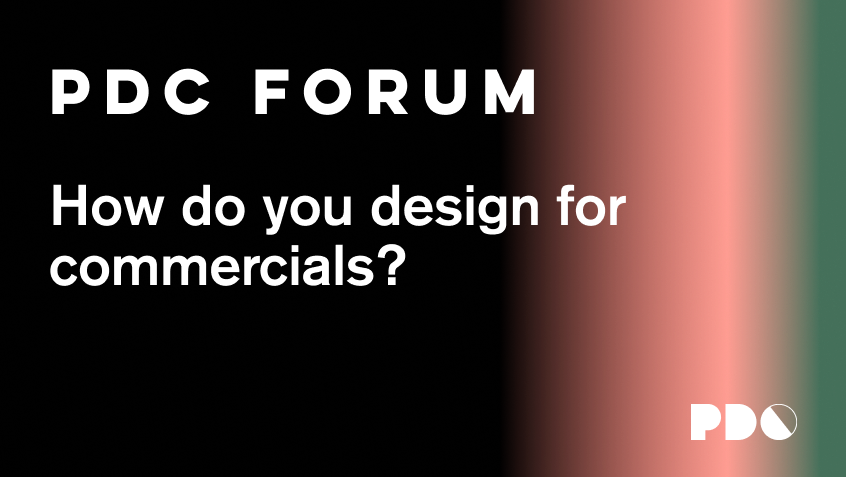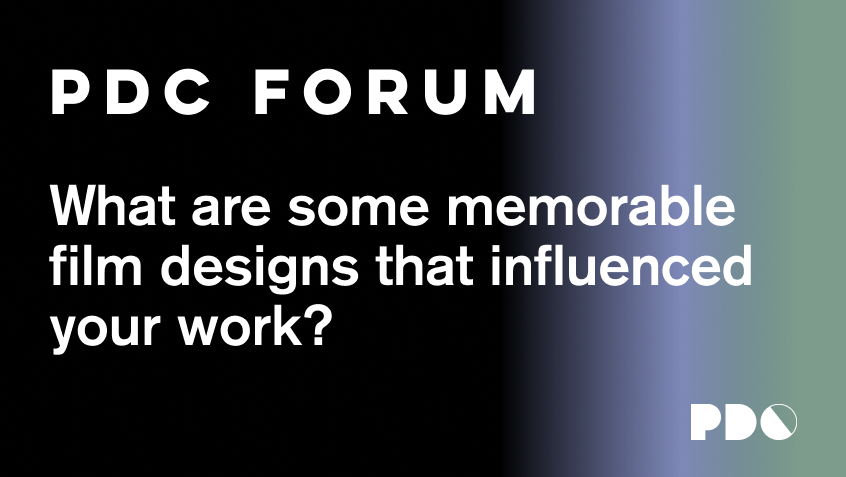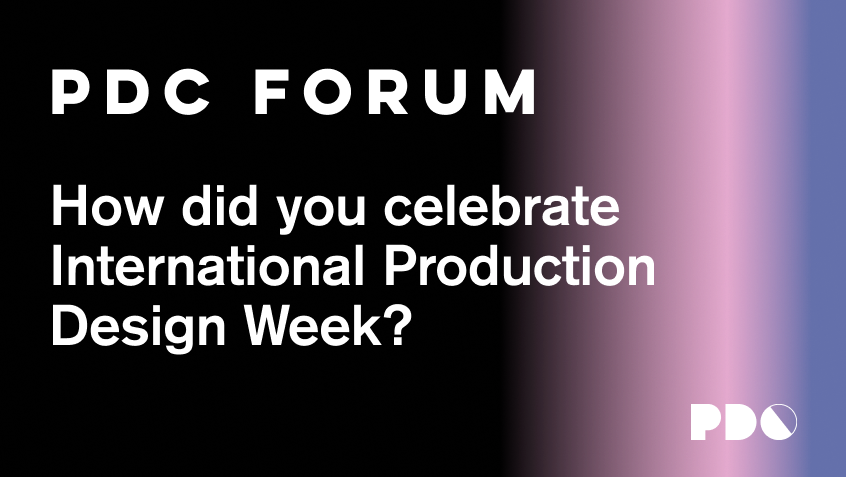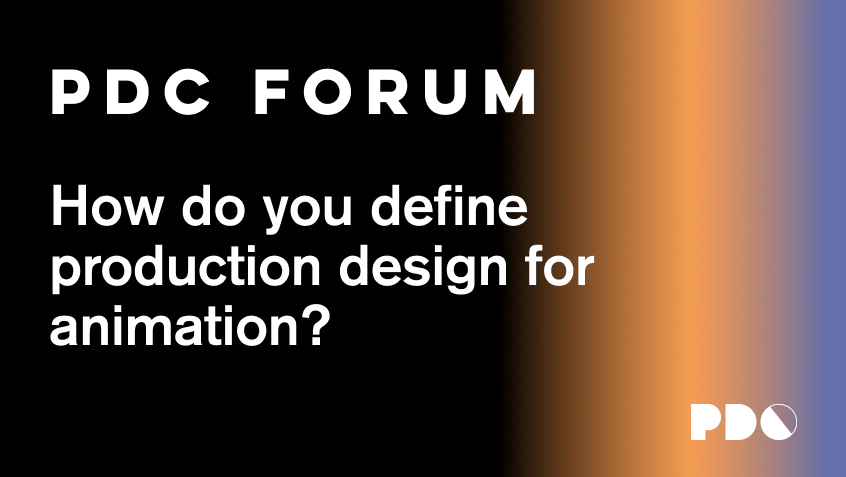
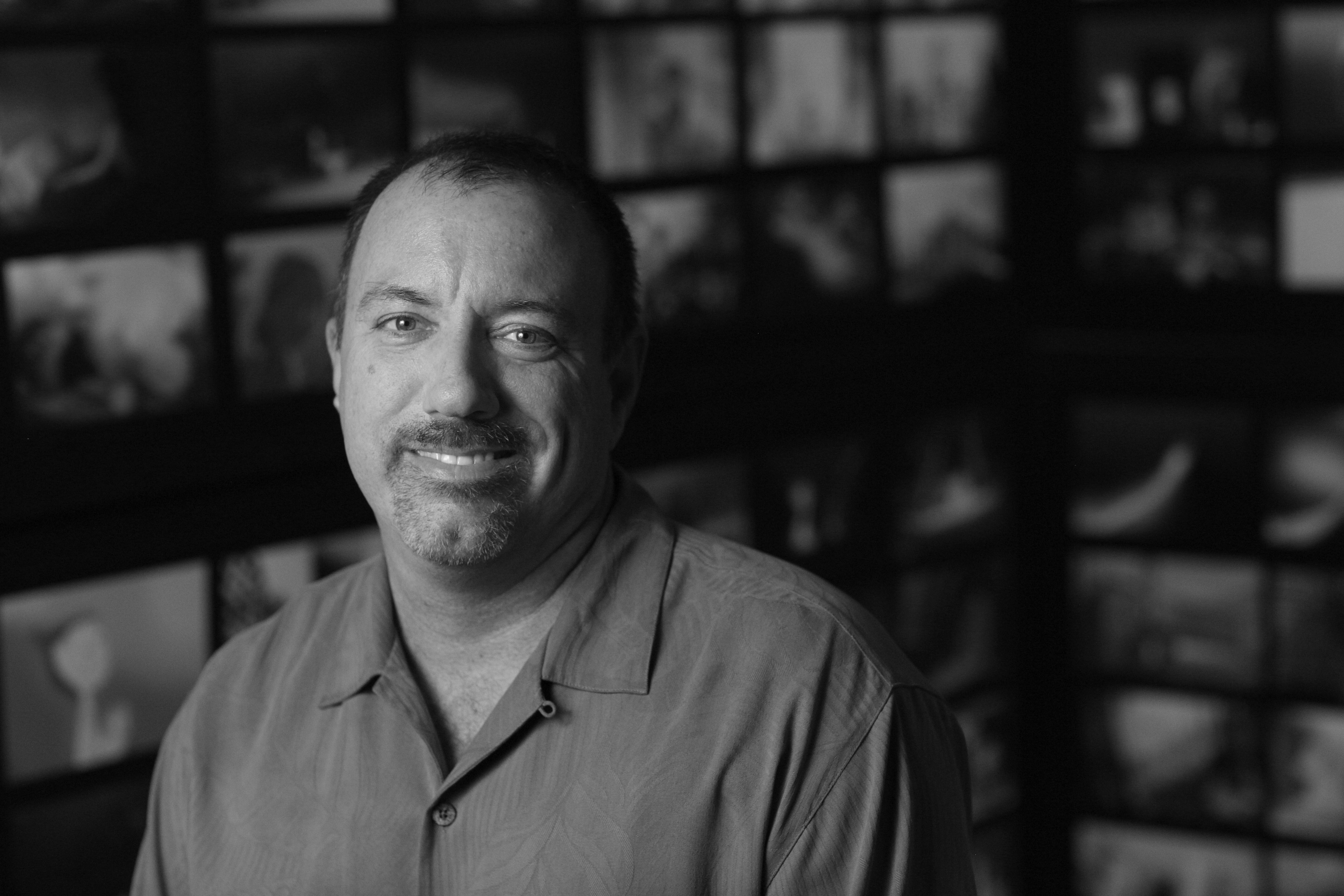
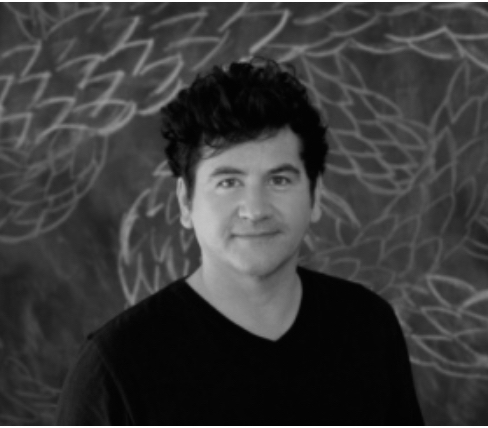
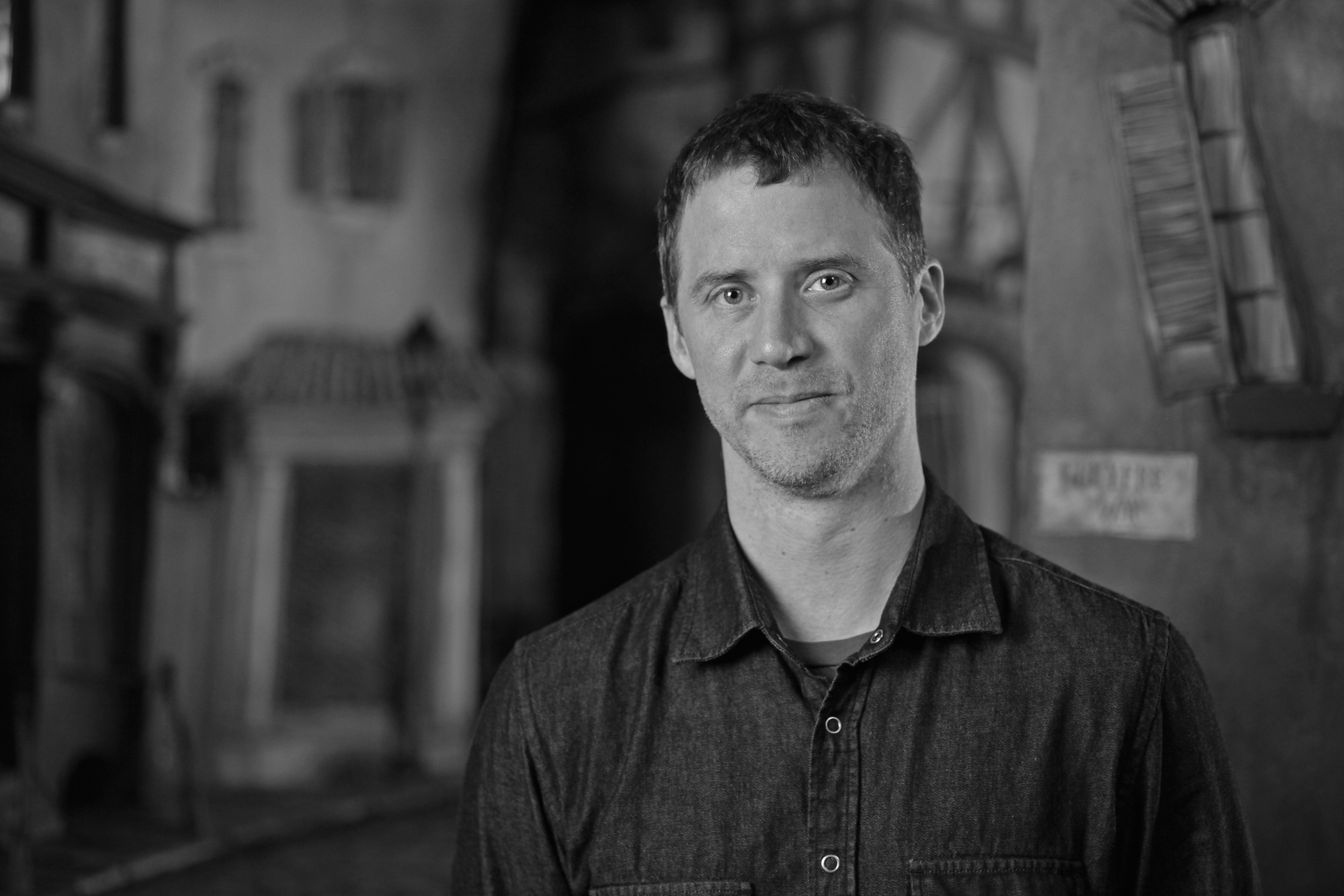
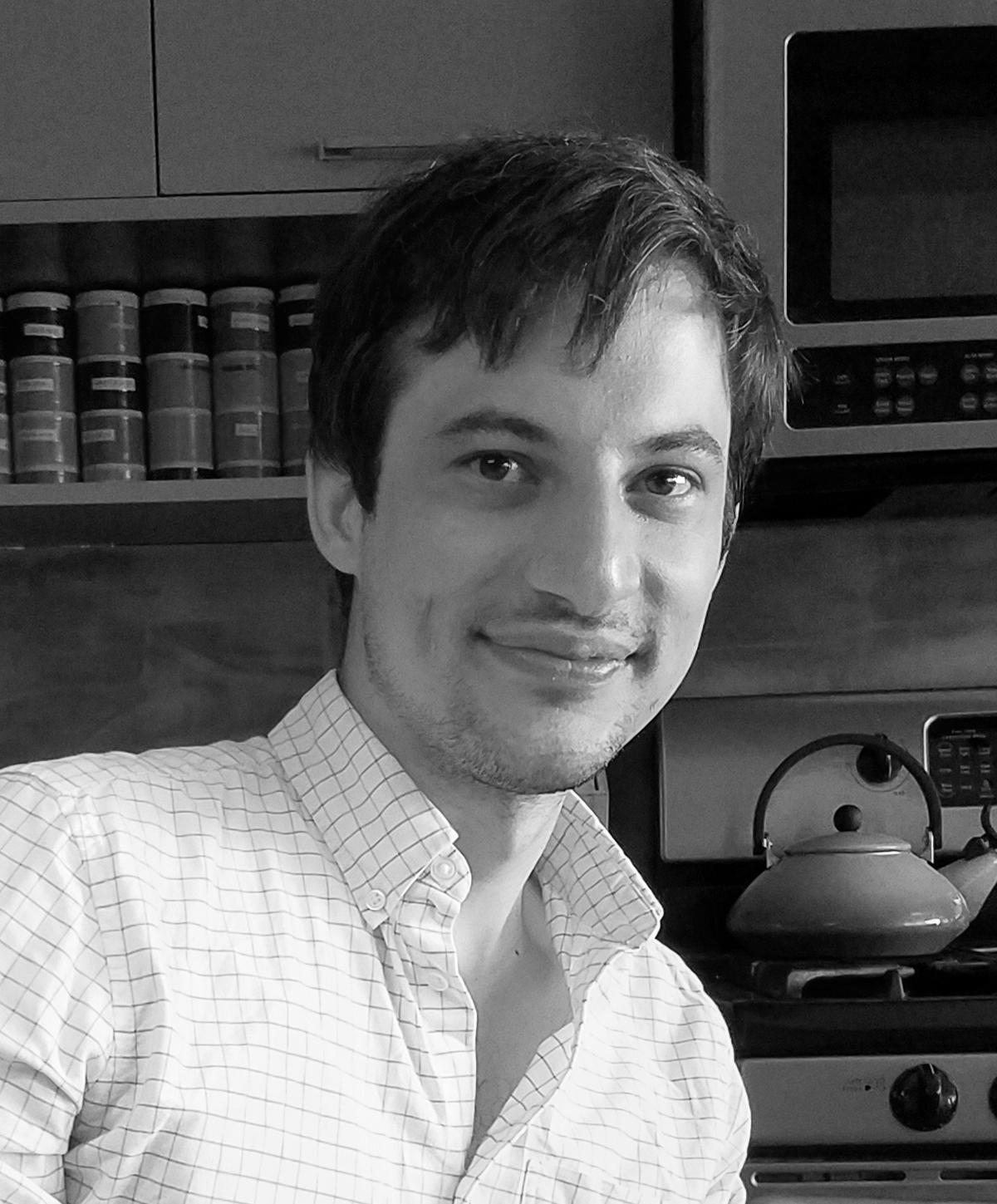
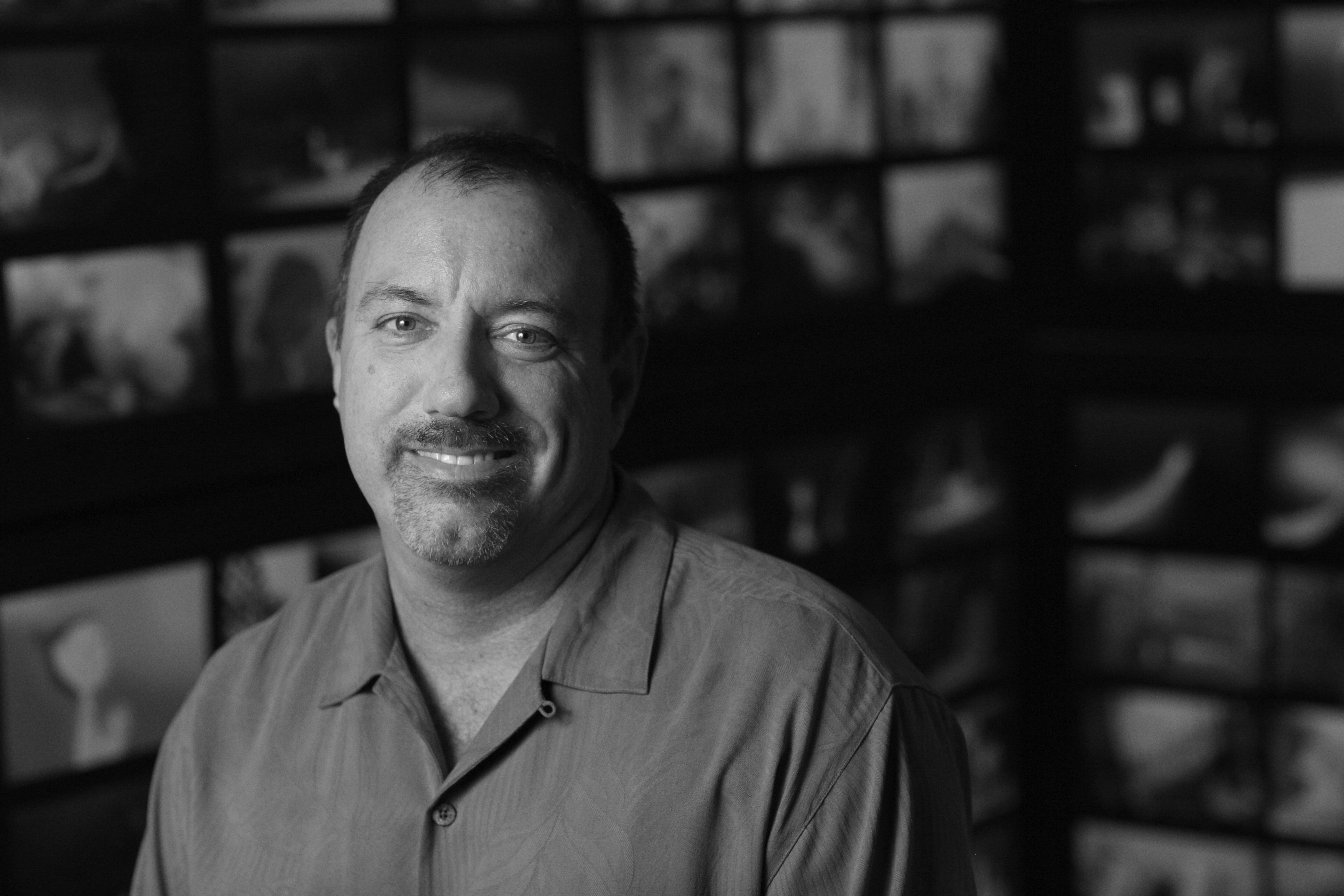
Academy Award-winning filmmaker Ralph Eggleston joined Pixar Animation Studios in 1992 as the art director of “Toy Story”, following which he helped develop the treatment and screenplay for “Monsters, Inc.”. Eggleston contributed his talents to a number of Pixar’s films such as “Finding Nemo,” “The Incredibles,” and “WALL•E” , and also directed the Oscar and Annie-winning short film “For the Birds". He most recently worked as the production designer of Academy Award-winner “Inside Out.” Currently, he is reuniting with Director Brad Bird to production design Disney•Pixar’s upcoming feature “Incredibles 2,” set to release in June 2018.
When Inbal Weinberg and Kalina Ivanov asked me to contribute a piece for Production Design Collective, I was delighted, as I’ve been a loyal follower since the website began. I am always fascinated by the artistry, inspiration, and techniques of other film designers around the world.
As a Production Designer at Pixar Animation Studios, I am often asked, “What does a ‘Production Designer’ do?” - My usual response: Production Designers help establish the cinematic world in which the story takes place. We provide visual themes, and variations on those themes, that add subtext and history to the characters and environments that make up the story. We must visually—and efficiently—fill out the personalities of the characters and motivate the environments with thematic meaning and drama.
A few years ago, I was lucky to share the stage with the great Robert Boyle at the Academy of Motion Picture Arts and Sciences theater. It was a lecture on “Production Design in the Digital Age” – he was the opening speaker; I was the closing speaker. He talked about his process—how he would get in early in the morning, check the news while he drank some coffee, get in some design and drawing time, meet with various department heads and go over schedules and budgets, and then wander around the studio lot to check on the progress of the various sets he was supervising… it was as if he was describing my daily routine —only I don’t get to wander around sound stages as much as going from office to office or sitting in our various screening rooms to check the progress of work at hand.
The first question is often followed by, “What is the difference between ‘animation’ Production Design and ‘live action’ Production Design?”
Quite simply, everything you see on screen is designed and created entirely from scratch— from concept design, to building, shading, lighting, simulation of cloth and hair, and animated performances- nothing is free.
In 1993, on “Toy Story,” we didn’t have things we now take for granted, like atmosphere, back lighting, depth of field, cloth simulation, interactive lighting; this forced great creativity! There were a number of limitations regarding the world we could create; hard surfaces, plastic, metal – the materials inherent to toys – were a challenge to render believably. Luckily, the characters and storytelling were strong enough to bring the audience along!
We also have to design our actors—the characters, including their costumes and hair. We work closely with the animators to make sure each character is designed to do what is called for in each scene. Audiences want to focus on the acting and the story—so the designs need to be well thought out and flexible enough to achieve whatever is called for from every angle.
Many people think that our goal with CG design is to “look as realistic as possible.” At Pixar, that has never been the case. We prefer to call it “believability.” Taking advantage of reality, but caricaturing it to our needs. In either case, it’s CHARACTER FIRST. Everything else will follow. As any experienced Production Designer would tell you—by delving into the characters, the story will tell you how to approach the design.
Like live action, the Production Designer on an animated feature is often one of the first people on the show—helping imagine and visualize the world of the story as it is being developed.
A VERY big difference between most live action films and animated films is that we never have the equivalent of a finished “Shooting Script.” We do start with a script, but it’s broken down into storyboards that are filmed as story reels—adjusted every three months when we show the reels to other people at the studio to get notes on character, clarity, entertainment, and drama. It’s a bit more akin to “workshopping” in theater than anything. By the time the story is well in place, we’re often halfway through production!
Consulting with the Director, our Production Designers lay out the broad (and sometimes specific) visual goals for the film. We gather reference and do tons of sketching and little paintings to sell our ideas. The Art Directors contribute too and plus these ideas, helping flesh them out into usable and practical designs.
The Production Designer helps build a crew, put together schedules and budgets, and works closely with the director and head of story to imagine the visuals of the film. I usually work by myself for the first few months, before needing to bring on key designers or art directors.
While different films call for different department structures, our art department crews tend to involve a Production Designer and three Art Directors: one for character design, one for environment design, and one for texture design. Depending on the needs of a given film, we may also have a Graphics Art Director.
We’ll have several sketch artists/designers and painters working with each art director—that number growing and shrinking with the needs of the show. The average size of the Art Department on a show is about 12 people.
We do a ton of research for each film—searching for the little things that help us earn the trust of the audience and achieve the believability of the world... The depth of research and the knowledge gained on each film is like a four-year graduate program on whatever subject our film is about. For “Toy Story,” we looked a lot at how toys were made. For “Finding Nemo” we studied ocean water density, wave structure, fish anatomy, and scuba diving. On “WALL•E,” we studied how trash is handled. For “The Incredibles,” we studied mid-century architecture, fabrics, ceramics, and photography. On “Ratatouille,” the crew studied French cooking. And for “Up,” the initial crew took a trip to Tepuis in Venezuela. These research trips are as much bonding experiences for the key crew as they are in “feeling” the world we will be spending a lot of time in. It’s truly a luxury to be able to do the amount of research we’re allowed to do, but it pays off in spades during the course of production.
The Art Departments on every show at Pixar are more an adjunct of the Story Department than anything—helping shape the world and characters needed to tell the story, and providing rough designs for characters, costumes, and roughing out ideas for sets and maps for locations for them to utilize so there is some consistency to the storyboards as the story reels are constructed and the world is being realized. That said, as the story becomes more solid and we have blocked in the big picture designs for the entire film, we transition to providing plans to the digital artists who will rough in our sets and characters to begin working out scale and cinematography issues.
At Pixar, we formed the first All Digital Art Department in 1993, on the very first all-digital feature film production, “Toy Story.” Within the Art Department, the tools we utilize vary from show to show, as well as phases of production. However, while we fully utilize digital tools at our disposal, most everything we do still starts with pen, paper, and paint or pastel. It’s still the fastest way to communicate ideas and share them amongst the crew.
In 2001, Designer Richard Sylbert visited us and was thrilled to see the sheer amount of drawing we were doing. “You get to design EVERYTHING?” he asked. “GET to? We HAVE to!” we replied!! He later said that if he and his mentor, William Cameron Menzies, were just starting out, they’d be working at Pixar. What a compliment!
One of the key tools we utilize is a Color Script. A common misconception is that a color script is an illustration of the story; rather, it is a series of images that diagram the emotional flow and tone of the entire film from scene to scene—providing ideas for staging, color, texture, and lighting. Each Production Designer at Pixar utilizes them in different ways, and every film calls for different approaches. I’ve used pastel and paint, as well as digital paint applications to get these done. I’ve found that while details of the story may change, if the emotional content of the color script is sound and supports the director’s vision, it tends to hold true. Even if major changes in the story occur, it can be adjusted fairly quickly. It’s a relatively quick roadmap for everyone to “see the movie” at one glance.
Our Art Departments are key in the planning and execution of our films from the beginning to the end—envisioning concepts for virtually every idea we will see on screen (and MANY we will not!!). We pre-visualize each set, working with story, digital artists and the directors of photography (at Pixar, the role of D.P. is split into two—one for camera and the other for lighting; they work together closely to achieve the final goals).
I loved, for example, paying visual homage to the wonderful work of Tyrus Wong (“Bambi”) with “Finding Nemo.” Of course, the expanse of the ocean and the murk of the water gave us the reason to simplify and use great limitations to our advantage. Rather than put detail everywhere, as the computer can do so well, we opted to keep detail on the characters, and only on key areas—letting the rest fall off into murky shapes or simply expanses of oceanic hues.
What’s great about our process now, compared to when I began at Pixar on “Toy Story,” is that the tools are far better, and the artists using the tools are facile in using them to contribute, expand upon, and improve the initial concepts. Each and every department adds layers of ideas and details that fill out our worlds and help make them more believable.
How exciting! Now that the artistry of what we can do with the computer has caught up with storytelling abilities, we look forward to imagining stories and worlds that can challenge the art.
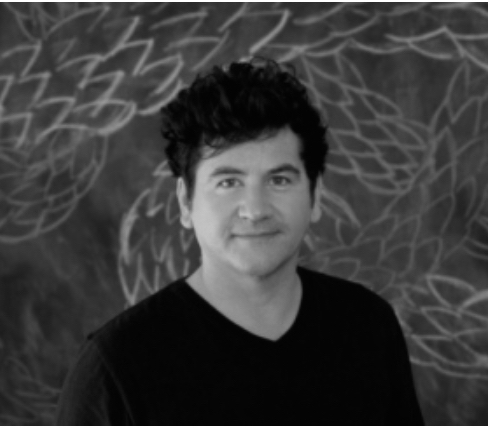
Production designer Carlos Zaragoza works both in Animation and Live action movies. His art direction credits include films such as Oscar-winner “Pan’s Labyrinth”, the animated “The Tale of Despereaux”, “Gnomeo & Juliet", "Madagascar 3", "Mr. Peabody & Sherman" and "Puss in Boots 2”. He recently was the production designer on Sony Animation’s "The Emoji Movie" and is currently designing Lin-Manuel Miranda’s "Vivo". Originally from Spain, his circus life took him to London, Toronto, San Francisco and Los Angeles, California, where he lives now.
Thank you for your invitation to participate in the Production Designers Collective. It is a great idea to bring all the different voices together. The Art Directors Guild has introduced a new category to recognize best production design on animated movies this year. I think that will help to share our experience with our live action colleagues. Animation and live action productions have a lot to learn from each other.
I see animation as a technique, not a genre. I have designed movies in many genres: horror, drama, comedy… both in animation and live action. I studied art direction for live action at the film school, in Madrid (ECAM) and art directed live action projects for a decade before I started doing it in animation. I always try to bring ideas from my experience in live action to any project I do in animation. I also like to see what other artists are doing in another crafts. The boundaries among film, tv, games, virtual reality are disappearing.
Production designers in animation, like in live action, are responsible for the overall look of a movie, but there are a few differences in their role. For example:
- Animation PDs supervise the design of the characters, including designing their bodies, not only the costume, makeup and hair style. Imagine the live action PDs supervising the casting of actors in a movie, wouldn’t it be great?
-We are responsible for the design of lighting in the film. Imagine you doing the DP work, except for the camera. We first do a full color script for the movie, to map out the overall color and light for each sequence. After that, we design the position and quality of the light on every shot. We produce detailed illustrations of the shots, color keys, to inform the VFX team. Lighting affects dramatically the design of all the elements in a shot and it is great to be able to conceptualize them all together.
- We are involved in the whole production of a movie, during an average of 3 or 4 years. We stay in the production until the end and supervise the look of every single shot in the film. We supervise the color corrections on the final edit of the movie, with the VFX sup., right before is released.
The other main difference is in the themes and stories of the animation movies. Studio productions usually target a “family audience”. The exceptions are always coming from independent projects and Japanese studios. Hopefully that will change in the next years and we will see more variety.
The structure of a feature animation art department varies from project to project. It typically includes:
- Production designer
- Art director (or many art directors, responsible for different aspects like character design, lighting or
environments) - Lead character designer, who leads a team of many 2d/3d character designers.
- Visual development artists, including generalist concept artists and environments, vehicles, graphic
designers and color and light specialists with different skill sets. They use a variety of tools, from
traditional techniques to digital 2d and 3d modeling and painting. Each project is different and always
requires a specific combination of artists.
Production designers are hired early on. Most of the times there is not a full script written yet, but a two-pages treatment. My work process begins with reading it and having conversations with the director, listening, understanding how the director see the story. You should be the closest collaborator of the director and support his/her vision.
In an early stage, the story is developed visually. There is a close collaboration between the storyboard and art departments. Story inform us, and we inspire the story with our visuals. The whole movie (storyboards) is edited at this point and will be updated through the different stages of production, replacing the story drawings with the approved versions of each shot. We always have a full version of the movie available. The story changes and evolves. We adapt to those changes to make sure that the visuals support the story in a consistent way.
I get the inspiration from the script. I also try to do total immersion on the theme or subject of the story, and that changes with every project. That is always my favorite part of this job! I am currently designing a feature animated musical, “Vivo”, set up in Havana and Miami. I listen to music, but also get inspired by literature, art, and real life. Getting inspiration from other movies is fine, but too limiting. Location scouting is very important. I get lots of inspiration when I visit a place, talk to the locals, understand their culture or history. Observing the light changes in a location along the day, the clouds, the atmosphere…all those things you cannot really get doing research online.
My first task is to put together a vision for the style of the movie. At this point I work on my own or with a small group of visual development artists, and produce a series of drawings and paintings, combined with references to convey that specific take on the look of the film. It is a very interactive and organic process and we regularly check with the director and producers. We gradually incorporate more artists and prepare a full “look of the picture” presentation for the studio, before we get a green light.
I do a lot of artwork myself but managing the team and interacting with the other departments takes most of my time during the production. I use different digital tools, a combination of 2d paintings and 3d rough modeling. The most important tool is my paper sketchbook and pencil that I carry all the time. Drawing something in the moment is still the best way of communicating.
Like in live action movies, this is a very collaborative work. The art department produces all the specific designs for each of the locations, characters, and define the color and mood of each scene. My main partner is the VFX supervisor, who is responsible for making those ideas a reality. He/she is supervising the production of all the different components of a shot. I also have a close collaboration with the individual department leads:
- Layout (our camera department) supervisor. They define the camera position, lenses, d.o.f. They are also responsible for set dressing. We work together to make sure that what is in the shot is consistent with the visual style required for each sequence.
- Modeling, Look Development, Character Simulation (Hair and Cloth), Visual Effects, Character Animation and Lighting. We keep track of the different stages of the production and inform to keep the look consistent.
At the end of the day, this is not about your ideas. It is about bringing out the images that support the vision of the director. Listening and supporting him/her is your most important task.
Rob DeSue
Oregon-based Art Director Rob DeSue is a 20+ year veteran of filmmaking, having experience in features, episodic, commercials and music videos, both live-action and animation. In his work at LAIKA studios he has been involved in such Oscar-nominated films as "ParaNorman", "The Boxtrolls" and "Kubo and the Two Strings". His free time is spent as an adoring husband and father of 2.
I am grateful to live life as an astute observer and admirer of design. While at work, I am faithfully beholden to it. My current charge, as an Art Director of stop motion animation, is to accurately and loyally interpret and translate the design of a film, as set forth by the Director and Production Designer. Subsidiary design work (set design, prop design and graphics) falls within my purview. It is within these forums that the mission of generating a practical world, from scratch, can confidently begin.
Much like live action, production design for animation has the task of being in constant service to the characters and the story, simultaneously. The design and stylization of the characters, which is often determined entirely by the Director, serve as the map by which all other rules for environments and the contents therein, are successfully derived. In most cases the style has to be bold in order to exist harmoniously with the character design. That said, overly ambitious design can be at risk of derailing the cumulative accomplishments of story, performance, editing, sound and lighting. In worse case scenarios this can detract from the viewer’s experience. Design is most impactful as a consistent, stylistic compliment, albeit a silent partner.
Quantifying the stylization and finding rules by which to apply it will outline much of the intent of early Look Development in animation. When literally everything has to be imagined and distilled from the ether, an elegant language must emerge in order to keep the infinite possibilities contained. The stylizations of the characters are the map by which every other element of the environment must be considered. The crux of the task is to create a world in which the characters will look seamlessly at home. Identifying sustainable ways of using color, texture, pattern and shapes to complement the Director’s vision and aid in the storytelling is the goal. The aforementioned design elements along with proportion, silhouette, and line can all be found, first, in the character sculpts, paint and costume and then within the equally invaluable concept illustrations. It is from these sources that the team goes about trying to solve, not just architecture and décor, but less obvious components like nature and even weather.
One of the phenomenal aspects about my specific situation is that I work at a studio where each consecutive project aspires to have an entirely new look. The expectation is that the Look Development period (early days) will foster such wild experimentation, with new techniques and materials, that the results will (and should) feel uncomfortable. Over time, the aesthetics of a new project may settle into a look that pushes the envelope less than the early experimenting might suggest. That said, it is vital to find this threshold and consider it bravely, in order to ensure that you are breaking new ground. Once a new context begins to form, and further, refined examples of this unique world are generated, confidence will begin to build. Speaking for myself, this is the most harrowing and rewarding time. At this point, the key inspirations and global references have been curated. The goal now is to present fresh takes on objects and environments that are not only appropriate and in line with the Director’s vision, they become a lens through which the world feels like a real place… ideally a world that viewers can identify, and simultaneously a spin on the world that no one has ever seen before.
Depending on the scope of a show, the number of examples needed to confidently define the style may fluctuate. If the story takes place in a town, one may be able to describe the rules of a world with relatively few examples. The Boxtrolls (2014) can be considered an example of this. By contrast, a journey film, like Kubo and the Two Strings (2016), required regional and seasonal examples of the style. At last, factor in the supernatural and more magical elements, all of which need to be resolved with each other to insure that the design thread remained consistent throughout the epic journey.
Three noteworthy differences between designing for live action and designing for animation (stop motion in particular) could be identified as:
1. Scale. Scale is factored into many, if not all of the choices we make for a stop motion build. Real light on real objects is the end result. The surface of everything has to be measured against the scale of the characters. This varies by production, but for the purposes of this discussion, an average adult character can range anywhere from 14” to 20“ in height. Everything for the film is made with modern materials. All things need to look as if they have a history and weren’t just produced, piece-meal, in a shop. We tap everyday resources to imply stone, vegetation, textiles etc. If the density of a fabric weave isn’t appropriate for a tablecloth or a drape, for example, it can affect the production value and bump the viewer. Paint thickness, the scaling of a pattern and the depth of an embossing, all have to be carefully considered.
2. Duration. The length of a stop motion film shoot may seem daunting. It can take 18 months to complete the filming on a 90-minute, stop motion feature. A viewer, over the course of an hour and a half will pick up on stylistic drifts that can occur on such a long shoot without constant vigilance. It is imperative to the design that the team stay on style throughout fabrication and shooting which can take 2 years or more. Once the style is established, style guides, cheat sheets etc. are distributed across multiple departments. The hope is that upon conclusion of the Look Development period, there is an answer or at least a path towards an answer to every question regarding design. This is the same road map that initially came from the characters and it needs to be upheld after months and months of work.
3. The number of participants required. There can be hundreds of artists and technicians, of various backgrounds and disciplines, involved in generating the assets for a given production. Realism is everyone’s shorthand, and it is human nature to default to realism, even when the most nuanced detail is being rendered. Locking arms with the team and discovering the style together, makes enforcing the style feel less dictatorial and more like an inclusive experience. Group presentations and peer reviews are effective ways of making the work at hand feel communal and the process of review and revision less personal and more collaborative.
Stop motion animation is such a methodical, carefully observed medium. The extent to which details are finessed and considered, is a testament to the passionate artists that help bring the inanimate to life.
If you think about it, all film is stop motion.
Dash Shaw
Dash Shaw wrote and directed the independent animated feature “My Entire High School Sinking into the Sea”, which premiered at the New York and Toronto Film Festivals in 2016. His graphic novels include "Doctors", "Cosplayers" and "Bottomless Belly Button". He was a 2010 Sundance Labs fellow, a 2014-2015 Cullman Center fellow, and a 2016 MacDowell Colony fellow.
I started as a comic artist, making graphic novels where I was both the writer/artist. I always liked animation, especially "limited animation" (or "low budget" animation)-- animation that limits the number of drawings, like "Speed Racer" or the first "Astro Boy" series. I always thought they had a connection to comics, like how "Speed Racer" and "Astro Boy" are based on comics and often executed by cartoonists. However, actually making animations seemed impossible to me. I thought I'd have to have a million dollars, or move to LA and work in the animation industry. I was too spoiled by my independence as a graphic novelist to attempt to work in an industry like that. But around 2007 I saw that I could make traditional animations using the computer. I made Gifs in Photoshop by scanning drawings, lining them up, and hitting "play". My wife Jane Samborski was trained as an animator and studied After Effects. Over the years, we worked together making traditional, 2d, drawn animation that is compiled digitally. The figures are line drawings on paper and the backgrounds are acrylic paintings.
I mention all of this only to emphasize that my "team" (if you can call it that) is very small. I write and storyboard the entire movie myself, the storyboards become the basis for the whole division of labor, and I draw a lot of the figures and paint a lot of the backgrounds. If another artist executes a background, it's a friend I know from the alternative comic book community. I send them very rough sketches, but they're very responsible for the "look" or design of the background. I know their comics, so when I ask them to paint a background I have an idea of what it'll look like. I consider it similar to casting an actor; I know the other work they've done and I want them to bring their personality to the role. Their background will look different than the other backgrounds in the same film, but the film itself becomes a combination of these different aesthetics, just like how it is a combination of different actors. My model for this is the director Ralph Bakshi (Heavy Traffic, Hey Good Lookin). I noticed that he would cast cartoonists to do different elements and their personalities were always strongly felt. His films feel like "collage" movies more than other animated films. I always liked that. They felt strangely alive and scrappy in a way other animated films did not.
Animation production design is probably very similar to live action design in that you have to imagine how it fits into and furthers the story. The story comes first. In my first feature, the entire design reinforces the main character's point of view. The story is all from his perspective. His perspective was heightened, warped, and unreliable. He has a huge existential crisis of being a teenager. This made me think of abstract painting, the ego and angst of the famous New York City abstract expressionists. So, I tried to dip into that and participate in it while also making fun of it. I wanted it to be like a cartoony art film, or ridiculous action-painting movie. In the movie I'm working on now, I'm trying to be more subtle in the presentation, but have it function abstractly, too.
In animation, anything is possible. It costs the same amount of money to paint a coliseum as it does a shack. You could scan a section of a carpet and it'd make an unusual, striking background in a cartoon. But, as the screenwriting adage goes: "when anything is possible, nothing is interesting." So, the movie has to create its own rules. In my movies, the designs always strictly adhere to the tone/guidelines of the story.
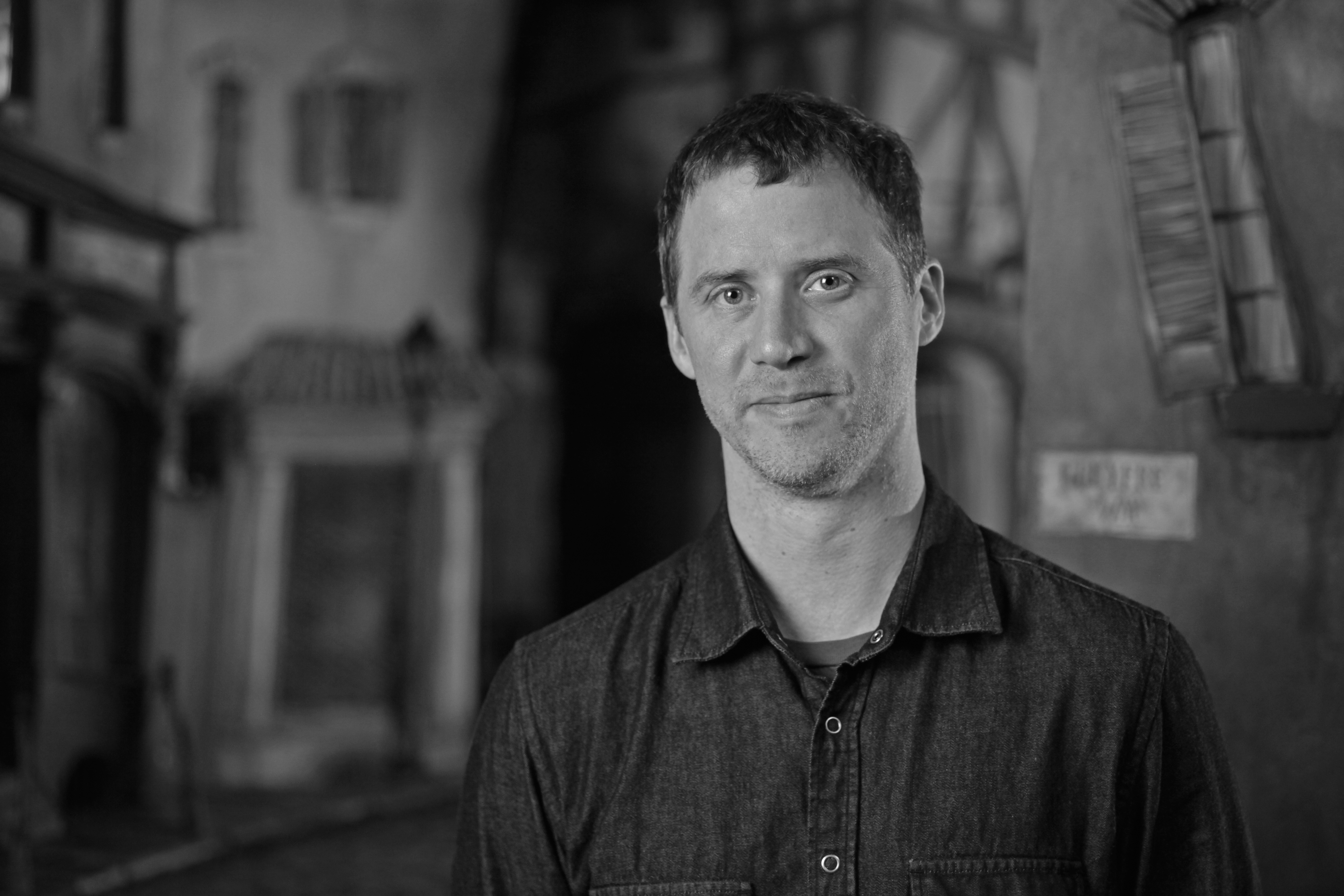
Oregon-based Art Director Rob DeSue is a 20+ year veteran of filmmaking, having experience in features, episodic, commercials and music videos, both live-action and animation. In his work at LAIKA studios he has been involved in such Oscar-nominated films as "ParaNorman", "The Boxtrolls" and "Kubo and the Two Strings". His free time is spent as an adoring husband and father of 2.
I am grateful to live life as an astute observer and admirer of design. While at work, I am faithfully beholden to it. My current charge, as an Art Director of stop motion animation, is to accurately and loyally interpret and translate the design of a film, as set forth by the Director and Production Designer. Subsidiary design work (set design, prop design and graphics) falls within my purview. It is within these forums that the mission of generating a practical world, from scratch, can confidently begin.
Much like live action, production design for animation has the task of being in constant service to the characters and the story, simultaneously. The design and stylization of the characters, which is often determined entirely by the Director, serve as the map by which all other rules for environments and the contents therein, are successfully derived. In most cases the style has to be bold in order to exist harmoniously with the character design. That said, overly ambitious design can be at risk of derailing the cumulative accomplishments of story, performance, editing, sound and lighting. In worse case scenarios this can detract from the viewer’s experience. Design is most impactful as a consistent, stylistic compliment, albeit a silent partner.
Quantifying the stylization and finding rules by which to apply it will outline much of the intent of early Look Development in animation. When literally everything has to be imagined and distilled from the ether, an elegant language must emerge in order to keep the infinite possibilities contained. The stylizations of the characters are the map by which every other element of the environment must be considered. The crux of the task is to create a world in which the characters will look seamlessly at home. Identifying sustainable ways of using color, texture, pattern and shapes to complement the Director’s vision and aid in the storytelling is the goal. The aforementioned design elements along with proportion, silhouette, and line can all be found, first, in the character sculpts, paint and costume and then within the equally invaluable concept illustrations. It is from these sources that the team goes about trying to solve, not just architecture and décor, but less obvious components like nature and even weather.
One of the phenomenal aspects about my specific situation is that I work at a studio where each consecutive project aspires to have an entirely new look. The expectation is that the Look Development period (early days) will foster such wild experimentation, with new techniques and materials, that the results will (and should) feel uncomfortable. Over time, the aesthetics of a new project may settle into a look that pushes the envelope less than the early experimenting might suggest. That said, it is vital to find this threshold and consider it bravely, in order to ensure that you are breaking new ground. Once a new context begins to form, and further, refined examples of this unique world are generated, confidence will begin to build. Speaking for myself, this is the most harrowing and rewarding time. At this point, the key inspirations and global references have been curated. The goal now is to present fresh takes on objects and environments that are not only appropriate and in line with the Director’s vision, they become a lens through which the world feels like a real place… ideally a world that viewers can identify, and simultaneously a spin on the world that no one has ever seen before.
Depending on the scope of a show, the number of examples needed to confidently define the style may fluctuate. If the story takes place in a town, one may be able to describe the rules of a world with relatively few examples. The Boxtrolls (2014) can be considered an example of this. By contrast, a journey film, like Kubo and the Two Strings (2016), required regional and seasonal examples of the style. At last, factor in the supernatural and more magical elements, all of which need to be resolved with each other to insure that the design thread remained consistent throughout the epic journey.
Three noteworthy differences between designing for live action and designing for animation (stop motion in particular) could be identified as:
1. Scale. Scale is factored into many, if not all of the choices we make for a stop motion build. Real light on real objects is the end result. The surface of everything has to be measured against the scale of the characters. This varies by production, but for the purposes of this discussion, an average adult character can range anywhere from 14” to 20“ in height. Everything for the film is made with modern materials. All things need to look as if they have a history and weren’t just produced, piece-meal, in a shop. We tap everyday resources to imply stone, vegetation, textiles etc. If the density of a fabric weave isn’t appropriate for a tablecloth or a drape, for example, it can affect the production value and bump the viewer. Paint thickness, the scaling of a pattern and the depth of an embossing, all have to be carefully considered.
2. Duration. The length of a stop motion film shoot may seem daunting. It can take 18 months to complete the filming on a 90-minute, stop motion feature. A viewer, over the course of an hour and a half will pick up on stylistic drifts that can occur on such a long shoot without constant vigilance. It is imperative to the design that the team stay on style throughout fabrication and shooting which can take 2 years or more. Once the style is established, style guides, cheat sheets etc. are distributed across multiple departments. The hope is that upon conclusion of the Look Development period, there is an answer or at least a path towards an answer to every question regarding design. This is the same road map that initially came from the characters and it needs to be upheld after months and months of work.
3. The number of participants required. There can be hundreds of artists and technicians, of various backgrounds and disciplines, involved in generating the assets for a given production. Realism is everyone’s shorthand, and it is human nature to default to realism, even when the most nuanced detail is being rendered. Locking arms with the team and discovering the style together, makes enforcing the style feel less dictatorial and more like an inclusive experience. Group presentations and peer reviews are effective ways of making the work at hand feel communal and the process of review and revision less personal and more collaborative.
Stop motion animation is such a methodical, carefully observed medium. The extent to which details are finessed and considered, is a testament to the passionate artists that help bring the inanimate to life.
If you think about it, all film is stop motion.
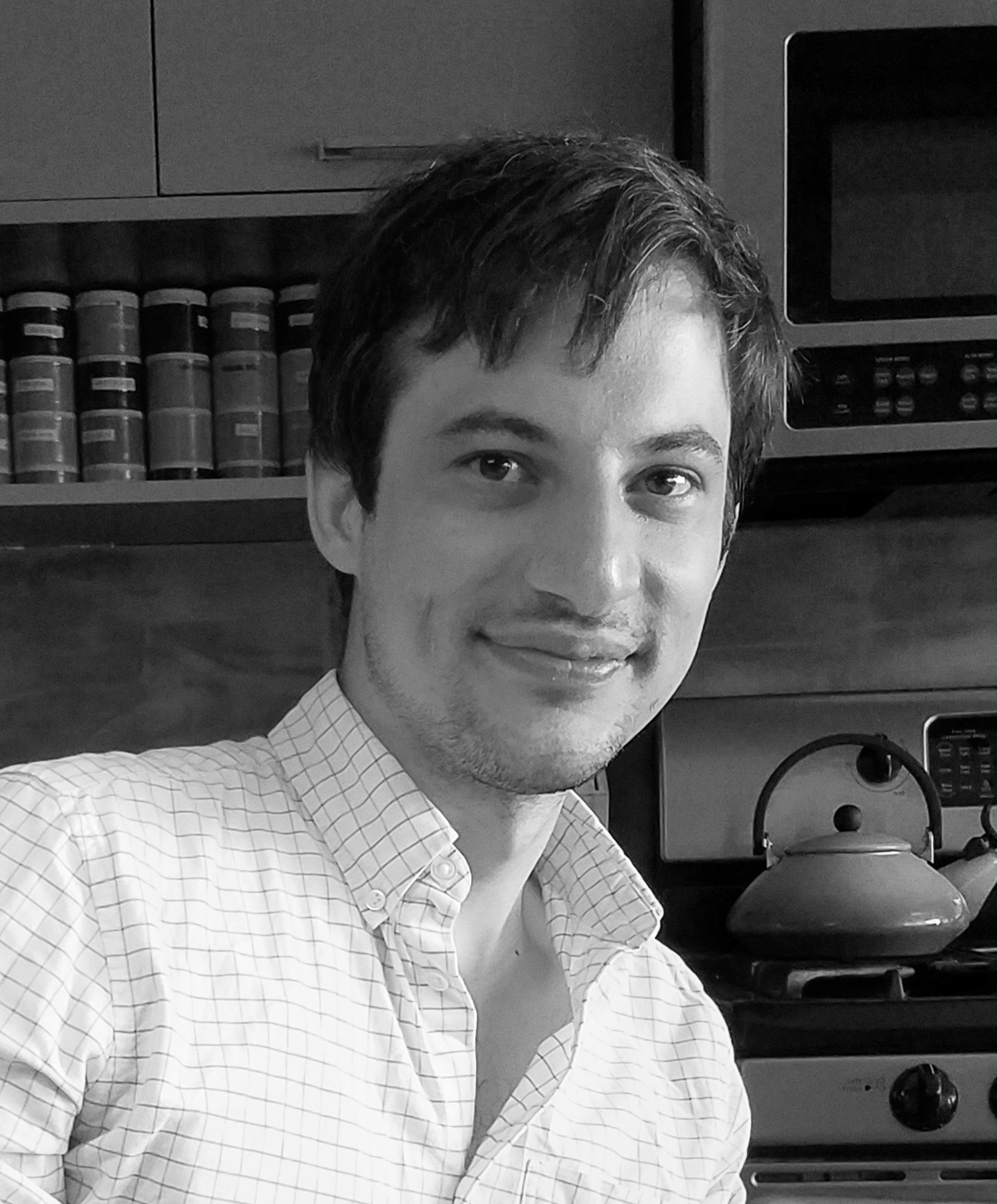
Dash Shaw wrote and directed the independent animated feature “My Entire High School Sinking into the Sea”, which premiered at the New York and Toronto Film Festivals in 2016. His graphic novels include "Doctors", "Cosplayers" and "Bottomless Belly Button". He was a 2010 Sundance Labs fellow, a 2014-2015 Cullman Center fellow, and a 2016 MacDowell Colony fellow.
I started as a comic artist, making graphic novels where I was both the writer/artist. I always liked animation, especially "limited animation" (or "low budget" animation)-- animation that limits the number of drawings, like "Speed Racer" or the first "Astro Boy" series. I always thought they had a connection to comics, like how "Speed Racer" and "Astro Boy" are based on comics and often executed by cartoonists. However, actually making animations seemed impossible to me. I thought I'd have to have a million dollars, or move to LA and work in the animation industry. I was too spoiled by my independence as a graphic novelist to attempt to work in an industry like that. But around 2007 I saw that I could make traditional animations using the computer. I made Gifs in Photoshop by scanning drawings, lining them up, and hitting "play". My wife Jane Samborski was trained as an animator and studied After Effects. Over the years, we worked together making traditional, 2d, drawn animation that is compiled digitally. The figures are line drawings on paper and the backgrounds are acrylic paintings.
I mention all of this only to emphasize that my "team" (if you can call it that) is very small. I write and storyboard the entire movie myself, the storyboards become the basis for the whole division of labor, and I draw a lot of the figures and paint a lot of the backgrounds. If another artist executes a background, it's a friend I know from the alternative comic book community. I send them very rough sketches, but they're very responsible for the "look" or design of the background. I know their comics, so when I ask them to paint a background I have an idea of what it'll look like. I consider it similar to casting an actor; I know the other work they've done and I want them to bring their personality to the role. Their background will look different than the other backgrounds in the same film, but the film itself becomes a combination of these different aesthetics, just like how it is a combination of different actors. My model for this is the director Ralph Bakshi (Heavy Traffic, Hey Good Lookin). I noticed that he would cast cartoonists to do different elements and their personalities were always strongly felt. His films feel like "collage" movies more than other animated films. I always liked that. They felt strangely alive and scrappy in a way other animated films did not.
Animation production design is probably very similar to live action design in that you have to imagine how it fits into and furthers the story. The story comes first. In my first feature, the entire design reinforces the main character's point of view. The story is all from his perspective. His perspective was heightened, warped, and unreliable. He has a huge existential crisis of being a teenager. This made me think of abstract painting, the ego and angst of the famous New York City abstract expressionists. So, I tried to dip into that and participate in it while also making fun of it. I wanted it to be like a cartoony art film, or ridiculous action-painting movie. In the movie I'm working on now, I'm trying to be more subtle in the presentation, but have it function abstractly, too.
In animation, anything is possible. It costs the same amount of money to paint a coliseum as it does a shack. You could scan a section of a carpet and it'd make an unusual, striking background in a cartoon. But, as the screenwriting adage goes: "when anything is possible, nothing is interesting." So, the movie has to create its own rules. In my movies, the designs always strictly adhere to the tone/guidelines of the story.
